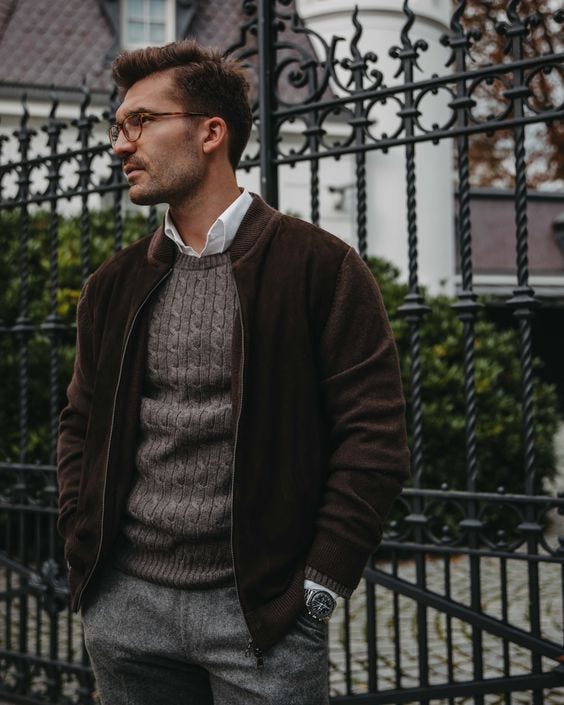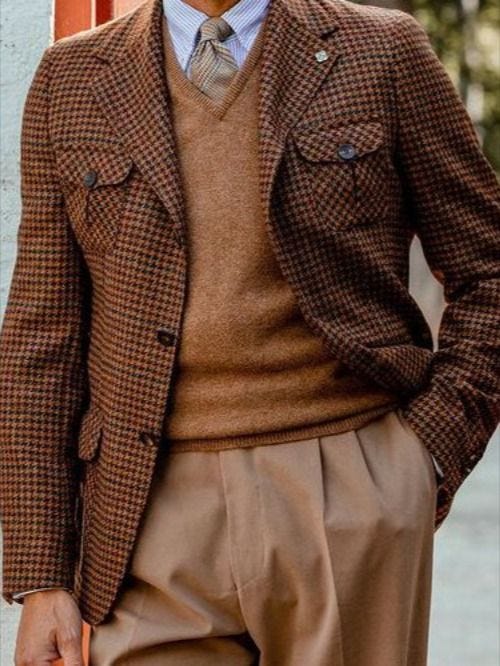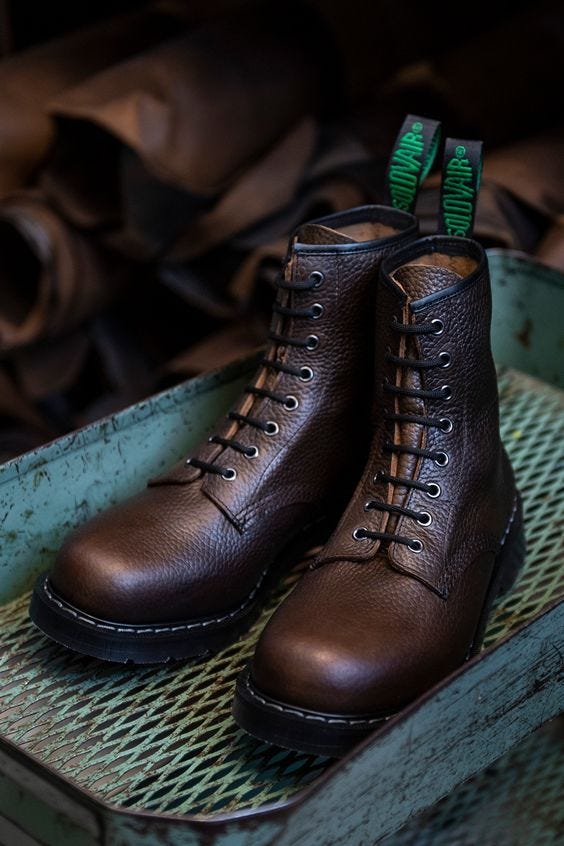A Look at Developing Personal Style Principles
A note on wardrobe cohesion and attention to detail
Hello, it’s good to see you again, the subject of today’s meeting is personal style principles: how they might aid in establishing a cohesive wardrobe and a unique style identity. I’ll be sharing a few of mine, and why I have them, to illustrate what I mean.
As a distinction, they are not tradition-based rules: how many buttons to do up on a suit or where you are allowed to wear tweed. Nor are they ethical or sustainability based fundamentals. Rather, these are a selection of small, esoteric affectations, think Coco Chanel’s iconic “take one thing off” rule, but personal to you, and note, the following are NOT for you to adhere to, but to inspire you for how you might develop your own.
So here are some of mine:
Example 1: No visible zips.
I find that each time I attempt to incorporate a zip into the ensembles I make, it breaks a certain illusion of timelessness. Even when I wear other pieces which are distinctly timely, such as my khaki trousers or Chelsea Boots.
This is something I’ve discovered through trying, and being unsatisfied with the results. I hope it might exemplify how experimenting can turn preferences into principles, which can further guide the pieces one purchases.
Example 2: Dress in contrast to the weather
It took me some time to properly define this aspect of my personal style, I’ve reduced it to the following: as the weather gets colder, I wear warmer tones, and as the weather grows warmer, I introduce some cooler tones.
In practice this means that for autumn through to mid-spring I love ivory or cream shirts, the greens I wear are olives, the greys are rich and dark. As summer rolls around, I introduce some blues, and prioritise bright whites.
I think contrast in dress is vital, and to exist in contrast to one’s surroundings is a further dimension which I really enjoy. I find it too goes a long way in lending cohesion across my wardrobe, and is a reason as to why I feel my outfits are distinctly my own.
So perhaps by choosing pieces with cohesion across certain tones or hues, influenced by the season or by another factor, you might develop a similar principle.
Example 3: No blue oxfords or dress shirts
This is a matter of connotation, that is to say connotation which I wish to avoid.
I am acutely aware of the fact that by dressing the way I do, I may be communicating certain political views which I don’t possess.
For me, nothing connotes affiliation to those views quite as much as the powder blue shirt. As such, I don’t wear them. Stripes get a pass, but usually only if they’re linen.
The point here is that awareness of what your outfit says, and what you would like your outfits to say, can be the basis of a principle.
Example 4: Lugs, Docs, etc.
To round out, a shoe buying principle. I don’t like them to be too formal. I will always pick a big soled leather shoe, for both practical and aesthetic purposes.
For one, I wear big trousers, and a big shoe does well to stand up to that visual weight. For two, they feel to me like an armour against the grime of city pavements. For three, we return to the matter of connotation, I find they go along way in keeping a perception of youth, perhaps as I grow older I’ll wind my way into the world of traditional hard-bottoms.
I hope by sharing some of my principles, I might have inspired you to consider whether you have any of your own. If you do, perhaps you'd like to share them?
I also hope I might have exemplified how certain attention to detail can have an effect on your outfits, and your buying habits.
Prep Club adjourned, I'll see you in two weeks for the next meeting.







“Powder blue oxfords give bad vibes” is killing me 😅 bravo